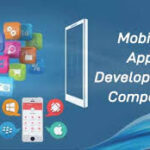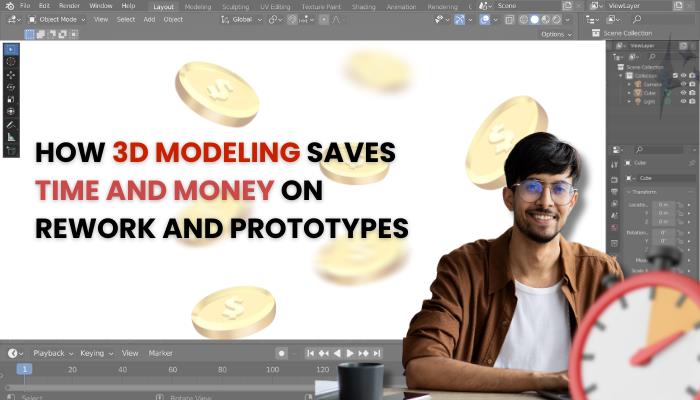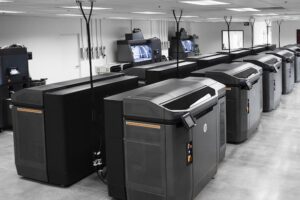What if the biggest reason for budget overruns and project delays wasn’t poor planning or bad luck-but the absence of precise visualization tools? The hidden costs of rework and excessive prototypes can cripple even the most promising projects. That’s where 3D Modeling proves its worth-not just as a creative tool, but as a cost-saving asset.
When design meets digital precision, development inefficiencies shrink. Engineers, product developers, and innovators alike are leveraging 3D Modeling to streamline their workflow, catch costly errors early, and ensure the final product is as close to perfect as it can be-before a single part is manufactured.
This listicle explores how 3D Modeling significantly reduces time and expenses during product development by minimizing rework and the need for multiple prototypes.
Accelerates Design Iterations Without Physical Models
Physical iterations are expensive. Every tweak demands a new prototype, increasing both time and material costs. 3D Modeling replaces this outdated cycle with rapid virtual iterations.
With real-time rendering, digital testing, and fast simulation, teams can try multiple variations of a design within hours rather than days or weeks. The ability to instantly evaluate options without building them physically is where time and cost savings begin to stack.
Key benefits of fast digital iterations:
-
Multiple concepts tested without material costs
-
Quick turnaround between design changes
-
Better design refinement before prototyping begins
This workflow reduces dependencies on physical samples, allowing developers to stay agile while remaining on budget.
Minimizes Human Error Through Visual Precision
Nothing eats into a development budget like errors discovered too late. Miscalculations, misalignments, or overlooked tolerances in early drafts often lead to scrapped prototypes or flawed production runs. 3D Modeling introduces unparalleled clarity and detail during the design phase.
By enabling engineers to inspect assemblies at every angle, zoom into tight tolerances, and simulate real-world interactions, 3D Modeling uncovers design flaws early-before they become costly production setbacks.
Why visual precision matters:
-
Identifies compatibility issues between components
-
Reveals weak structural points through simulations
-
Ensures functional integration of parts before manufacturing
This digital foresight reduces costly rework, improves design integrity, and builds confidence in every step forward.
Cuts Material Waste with Accurate Virtual Testing
Prototyping isn’t just time-consuming-it’s material-intensive. For each physical prototype scrapped due to a flaw, raw materials and hours of labor go down the drain. 3D Modeling offers a smarter way.
With precise virtual modeling, teams can simulate material behavior, test performance under stress, and predict real-world durability without ever cutting a single piece of material. The result? Fewer prototypes, less waste, and significant savings.
Advantages of accurate simulations in 3D Modeling:
-
Reduces need for trial-and-error builds
-
Improves selection of optimal materials
-
Enables stress, thermal, and movement analysis virtually
By identifying issues before anything goes to production, 3D Modeling ensures each physical prototype brings meaningful progress, not surprise expenses.
Enables Cost-Efficient Communication Between Stakeholders
Miscommunication between teams and stakeholders is a silent budget killer. Whether it’s a misunderstood spec or an unclear design intent, the consequences are expensive. 3D Modeling bridges the communication gap with vivid visualizations and detailed renderings.
Instead of static 2D drawings, stakeholders can explore interactive 3D models that convey exactly what a product will look and feel like. This clarity reduces feedback loops, prevents misinterpretations, and ensures all voices are aligned before production.
How 3D Modeling improves communication:
-
Visuals eliminate confusion in complex concepts
-
Stakeholders can view designs on-screen or in AR
-
Real-time collaboration with annotated 3D files
A better-informed team makes faster, more accurate decisions-and that’s priceless in high-stakes development.
Reduces Total Number of Physical Prototypes
Creating multiple physical prototypes is both necessary and frustrating. They cost money, consume time, and often delay final approvals. But 3D Modeling helps ensure the first prototype is far closer to final than ever before.
Thanks to digital simulation, form, fit, and function can all be validated before any tangible part is produced. This sharpens the first physical iteration, making it a near-production-ready prototype, which slashes the need for further revisions.
Benefits of fewer physical prototypes:
-
Decreased tooling and labor costs
-
Shorter feedback and approval cycles
-
Faster move from prototype to production
By front-loading accuracy into the design phase, 3D Modeling trims the fat off traditional prototyping cycles.
Shortens Time-to-Market With Agile Adjustments
Markets don’t wait. Whether you’re developing a consumer gadget, industrial tool, or healthcare device, launching late can cost you your competitive edge. 3D Modeling keeps startups and enterprises on schedule by making revisions a breeze.
Need to adjust a design after a user test? A digital tweak takes minutes. Redesigning for a new market spec? No problem. There’s no waiting for re-tooling or re-printing.
Fast changes enabled by 3D Modeling:
-
Swift incorporation of user or market feedback
-
Revisions shared and reviewed in hours, not days
-
Flexible model updates without disrupting schedules
Staying responsive to change while staying on time is a major strategic advantage—and 3D Modeling makes it possible.
Integrates with 3D Printing to Streamline Output
Once a digital model is finalized, it feeds directly into 3D Printing systems for a seamless bridge to the physical world. This end-to-end integration eliminates intermediate conversion steps that often introduce errors or require time-consuming adjustments.
Because 3D Modeling software often pairs perfectly with modern additive manufacturing tools, what you design is what you print—reducing chances for misalignment or wasted runs.
Why 3D Modeling and 3D Printing work hand-in-hand:
-
Direct CAD-to-print workflows
-
High fidelity between digital and printed versions
-
Reduced need for manual intervention or corrections
This integration further boosts speed, accuracy, and efficiency across the prototyping pipeline.
To Wrap Up
When delays, budget blowouts, and endless prototypes threaten to stall innovation, 3D Modeling emerges as a smart, scalable solution. From trimming rework to slashing material costs, its ability to offer clarity, precision, and speed is unmatched.
Whether you’re an emerging startup or an established enterprise, the benefits of 3D Modeling compound with every iteration avoided, every error caught early, and every hour of development saved.
If you are facing common prototyping challenges in 3D Modeling, you can hire a 3D modeler. 3D outsourcing companies provide dedicated & talented 3D Modeling experts as per your requirement.
Read More Blog You Can Explore This Website Also : globalpostnews.com
- How 3D Modeling Saves Time and Money on Rework and Prototypes
- Learn how 3D Modeling saves time and money on rework and prototypes with smarter design, fewer errors, and cost-effective development.
- 3D Modeling, 3D outsourcing companies,hire a 3D modeler, 3D Modeling experts
Related posts:
 Get Found Online with the Best SEO Agency in Birmingham – Hire Now for 2025
Get Found Online with the Best SEO Agency in Birmingham – Hire Now for 2025
 High-Quality Biomedical Waste Incinerators & Laboratory Glassware Made in India
High-Quality Biomedical Waste Incinerators & Laboratory Glassware Made in India
 Understanding the Role of IoT in Modern Manufacturing: A Comprehensive Guide to Smart Factories and Industrial Transformation
Understanding the Role of IoT in Modern Manufacturing: A Comprehensive Guide to Smart Factories and Industrial Transformation
 Best Account Management Software for All Businesses – EmizenTech
Best Account Management Software for All Businesses – EmizenTech
 The Role of an ATS in Onboarding: Bridging the Gap Between Offer and Start Date
The Role of an ATS in Onboarding: Bridging the Gap Between Offer and Start Date
 Benefits of AI-powered CCTV Cameras for Business Surveillance
Benefits of AI-powered CCTV Cameras for Business Surveillance
 Top App Development Agency UK – Transforming Ideas into Apps
Top App Development Agency UK – Transforming Ideas into Apps
 How Modern Cars Are Turning to Tech Experts to Solve Connectivity Chaos
How Modern Cars Are Turning to Tech Experts to Solve Connectivity Chaos






